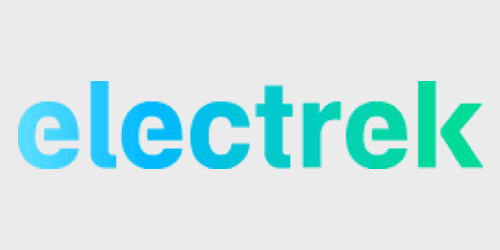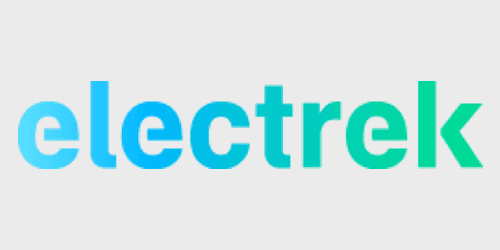Tesla Supercharger

Table of contents
Tesla’s Supercharger network
The Tesla Supercharger exists as a combined network of proprietary charging stations developed and implemented by Tesla. As a result, the automaker doesn’t have to rely on third-party charging networks like most automakers producing electric vehicles currently do.
The Supercharger network was introduced in September 2012, beginning with six Supercharger stations. This debut coincided with the launch of Tesla’s Model S sedan, the first to utilize the new network.
Check out Electrek’s footage of one of the original Supercharger stations in Hawthorne, CA:
Since then, the Supercharger network has grown to over 20,000 stalls worldwide within over 2,100 stations or hubs. This includes North America, Europe, Asia, and even the Arctic Circle. Tesla recently passed 1,000 Supercharger stations in North America alone.
The average station usually features about 10 Supercharger stalls, but some stations offer many more. For example, Tesla opened a 72-stall Supercharger station in Shanghai at the end of 2020, making it the world’s largest. Currently, Tesla is working through permitting for a 62-stall station on the west side of Los Angeles that could easily make it the largest in North America.

Opening the Tesla Supercharger network to other EV companies
In July of 2021, Tesla CEO ELon Musk revealed that the company was planning to open its Supercharger network to other automakers later this year.
Soon, non-Tesla owners will be able to sign up for an account through the Tesla app, then simply add a credit card and manage their charging sessions.
We later learned some of the reasoning behind this decision. By opening up its charging network to non-Tesla EVs, the automaker will gain access to $7.5 billion in EV funding from new US legislation under the Biden Administration.
Here’s the latest news to keep you in the loop surrounding Tesla’s every-growing Supercharger network:
- Tesla starts giving back Supercharger access to salvaged vehicles
- Tesla is prepping for giant Supercharger expansion ahead of opening the network to other EVs
- Tesla again bans salvaged cars from Supercharger network in confusing situation
How it works
Think of it like a gas station… but without the gas and with a much smaller footprint. Tesla Supercharger stalls can be found in parking lots of business parks, grocery stores, or in larger stations off major highways. Unlike most gas stations, Superchargers are usually available 24 hours a day, as long as they are accessible.
You pull in, find a stall, park, and plug in. Once plugged in, the vehicle’s charge port LED will flash green to indicate that charging has started. You can then monitor your charging progress on your instrument panel.
With your Tesla app, you can view stall availability, monitor your charge status, and get notified when you’re ready to go. Furthermore, there is no need to have your credit card out to swipe. Everything is charged through the Tesla app and will utilize any credits you may have. If you don’t have any credits from Tesla, the app will simply charge your designated card on file.
Tesla charging levels
It’s important to understand that Tesla Superchargers function using DC fast charging, which is currently the fastest method available for EVs. With that said, you won’t be able to pull that type of power to your Tesla at home. For those cases, drivers use Level 1 or Level 2 AC charging.
Think of Level 1 as a universal charging option. If there is a standard wall socket nearby, you will be able to charge your EV with that. With that said, 120V is the bare minimum amount of juice you can pull into your EV. So if the battery capacity of your 2021 Tesla Long Range Model 3 is 82kWh, you’re looking at days to charge, not hours.
Level 2 chargers are the most common type found at third-party charging stations. 240V plugs usually offer around 40 amps and are usually more specifically placed in homes. Think of this charger as the equivalent to your dryer or other large appliance.
Tesla suggests owners install a Level 2 charger in their home or garage if they can. This is fairly easy for an electrician or specialist to come and install. With Level 2, you’re looking at 8-12 hours to charge.

DC Superchargers
These Level 3 chargers abandon the alternating current (AC) methods above to mainline power directly. While they require a lot more power from the grid (480+ volts and 100+ amps), their output is truly “super.”
Most Tesla Superchargers can now recharge up to 200 miles of range in 15 minutes, depending on the charge rate. Superchargers also range from charging speeds of 90 kW to 250 kW, depending on the station.
It’s important to note that due to their massive direct current (DC), Superchargers are not recommended for daily charging on your Tesla. Instead, superchargers are in place to provide a quick charge for drivers on the the go, or for those on longer road trips.
According to Tesla, the peak-charging rate of the battery may decrease slightly after a large number of Supercharger sessions. To ensure maximum driving range and battery safety, the battery charge rate automatically decreases when the battery is too cold and when it is nearly full. It’s best to use a Supercharger with a low battery that has been preconditioned (if necessary).
How much to charge a Tesla?
Due to the fluidity of available electricity in various areas, that is not a simple answer. Factors such as available electricity on the grid, peak hours, and how much electricity you are transferring all play a part in the price of charging your EV on a Tesla Supercharger. All prices already include taxes and fees.
Specific pricing for each Supercharger location can be seen by tapping its pin on the navigation touchscreen. As you Supercharge, your session total is then displayed on the touchscreen.
Tesla owners are usually billed for the amount of energy delivered to their vehicle (kWh). However, some regions cannot track such utilities and prohibit this practice. As a result, Tesla offers a charge-by-the-minute model known as Time of Use (ToU).
Per Tesla’s website, here are some other pricing details to be aware of with the Supercharger program:
- When billing per minute, there are two tiers to account for changes in charging speeds, called “tier 1” and “tier 2”.Tier 1 applies while cars are charging at or below 60 kW and tier 2 applies while cars are charging above 60 kW. Tier 1 is half the cost of tier 2.
- Tier 1 also applies anytime your vehicle is sharing Supercharger power with another car.
- Pricing to use a Supercharger may vary by location, and prices may change from time to time.
- Certain Supercharger stations offer on-peak and off-peak rates. The rates and peak times are both displayed in the navigation application on the vehicle touchscreen.
- Standard Supercharger fees apply after free Supercharging credits are used.
Idle fees
The idle fee is a protocol used to ensure as many Tesla drivers can utilize Supercharger stalls quickly and efficiently. It works by charging a fee to any EV occupying a Supercharger with a complete charging session, if the station is at least 50% full. That being said, if the Tesla is moved within five minutes of the charge session completion, the fee is waived.
This is where the Tesla app comes in handy. By monitoring your Supercharging session and alerting you to its completion (necessary range to get your your next destination), you can move your vehicle quicker to avoid idle fees.
Tesla’s proprietary connector
From day one, Tesla has chosen to pave its own way in the EV industry, and that’s no different with its Supercharger connector. This proprietary connector exists on all Tesla models in North America, although it does offer CHAdeMO and CCS adapter for certain markets.
For example, its Model 3 was built with a CCS connector for Europe. Furthermore, older European Teslas were retrofitted with adapters to support the existing connector, plus the standard CCS type 2. This helped Tesla owners utilize the growing charger network overseas.
Even after testing the connector adapter in the Korean market last December, Tesla has yet to bring it to North American drivers. In February, third-party charge network EVgo announced it would be bringing Tesla-compatible connectors to over 600 of its US charging stations.

Charging from home
As previously mentioned, Tesla recommends Level 2 charging from home as the most effective method in maintaining the range and health of your battery.
Tesla currently offers an at-home wall connector unit for $500 that can be installed by any certified electrician. Furthermore, US residents can qualify for federal tax credits up to 30% for charging with an at-home unit. The wall connector can be installed indoors or out, depending on where you keep your Tesla.
Additionally, wall connectors can share their power to maximize existing electrical capacity, and can charge multiple cars simultaneously. Depending on the power available in your area at a given time, Tesla’s current wall connector can charge up to 44 miles of range per hour.
How to find a Tesla Supercharger
So now you know all there is to about Tesla’s Supercharger network, and you’re ready to try it out for yourself. There are multiple resources that are literally at your fingertips to help you find the closest charger.
First, you can use the interactive Tesla Supercharger Map on its website. This is great for mapping out longer trips ahead of time, when you have a moment to actually sit at a computer or tablet.
On the go? No worries, the Tesla app offers the same Supercharger map feature and can easily help you find a place to juice up nearby.
Additionally, your Tesla vehicle itself is the most viable option when you’re already out. Tesla’s built-in trip planner is designed to automatically route you through Superchargers on the way to your destination.
Furthermore, Tesla Supercharger locations pop up in your EV’s navigation, too. What’s even cooler is that the navigation will also display the maximum power output of each Supercharger location. That way you know you’re getting the fastest charge available before you even park.

Tesla Supercharger network expansion
As you have probably seen by now, Tesla’s Supercharger network has expanded tenfold since it debuted less than a decade ago. The company continues to expand its network presence globally each month.
Furthermore, Tesla continues to both maintain and update its current Supercharger infrastructure to keep up with its advancements in battery capacities and faster charge times.
Elon Musk has recently shared that Tesla plans to open up its Supercharger network to other EV manufacturers later in 2021. How other drivers will pay remains unclear, but will likely involve creating a Tesla account and downloading the app.
Superchargers around North America will also be fitted with adapters for other EVs, as Tesla’s utilize their own unique connector.
Earlier this year, Musk shared plans to upgrade the Supercharger network to offer charging speeds up to 300 kW. In the past, Superchargers have topped out at 250 kW charging speeds, and its EVs have been designed to handle as much.
That being said, an OTA update might be required for any Teslas to even take advantage of these new charging speeds.
Most recently, Tesla deployed two Supercharger stations in Morocco, marking the automaker’s first entry into the African market. This could be a hint at future entry of selling Tesla models in Africa, but that has not been confirmed yet.
With that said, Tesla has a history of implementing Supercharger stations in markets it plans to eventually enter.
Circle back to this guide for updates on the Tesla Supercharger network as it continues to evolve.

